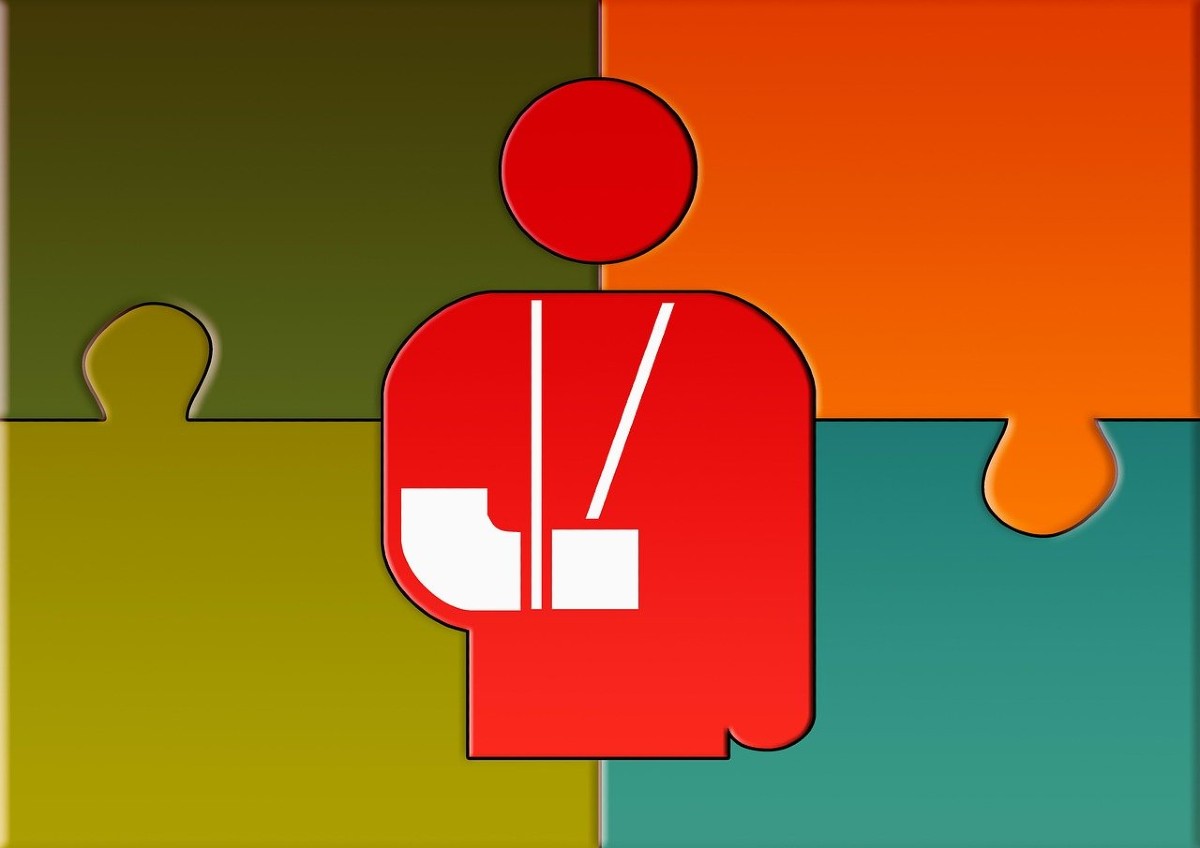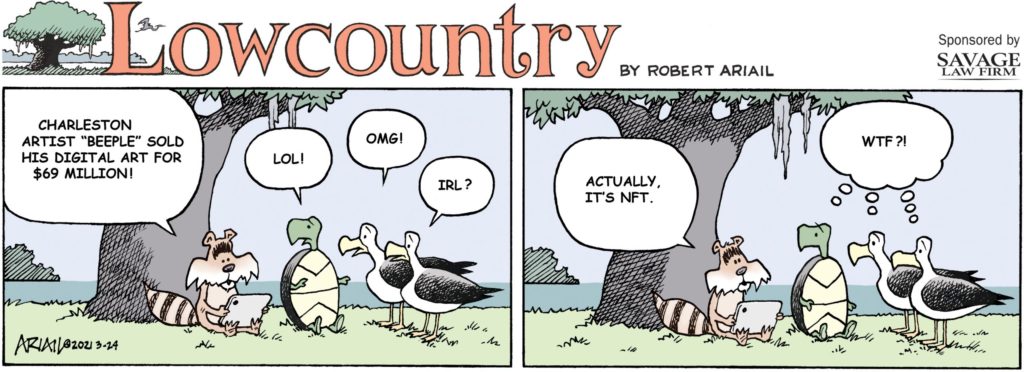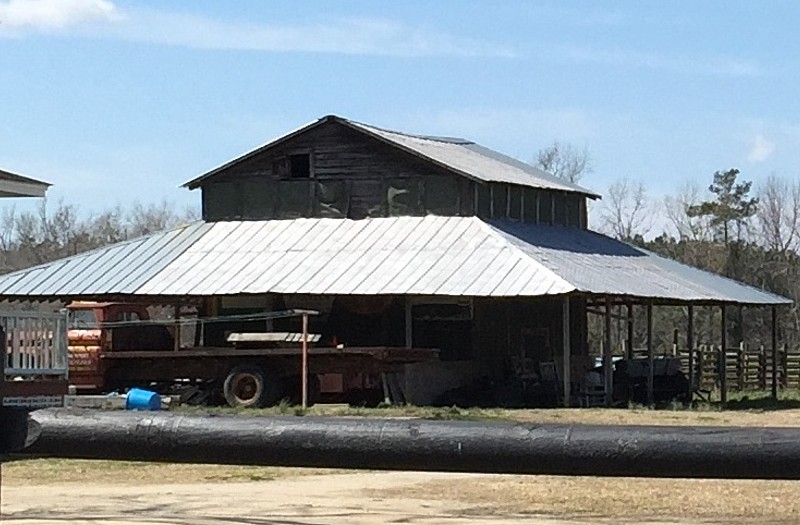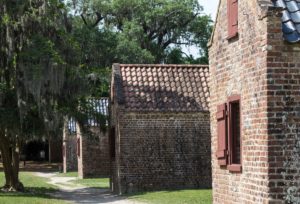STATEHOUSE REPORT | ISSUE 20.13 | MARCH 26, 2021
BIG STORY: State has big incentive to expand Medicaid to 200,000 in S.C.
NEWS BRIEFS: Senate committee picks symmetrical state flag design
LOWCOUNTRY, Ariail: WTF
COMMENTARY, Brack: Vaccinations dampening virus, but pandemic ain’t over yet
SPOTLIGHT: Charleston Animal Society
MY TURN, Cordell: SC should embrace rooftop solar and energy efficiency
FEEDBACK: Dominion knows math on net metering proposal
MYSTERY PHOTO: Farm building
State has big incentive to expand Medicaid to 200,000 in S.C.

By Andy Brack, editor and publisher | State coffers could get $2.5 billion in new federal funding over two years if lawmakers get over longstanding political objections to expand Medicaid to cover about 200,000 residents without health insurance. At present, many agree expansion is more of a possibility than a probability due to the state’s political climate.
The new funding over two years would come from a 90 percent federal match of health insurance costs plus a new federal incentive of about $790 million with few strings attached, analysts say. And if lawmakers were to cut off funding to pay for insurance for those in the expansion pool, they reportedly wouldn’t have to return the extra money.
But the incentive, which is part of the newly passed $1.9 trillion coronavirus relief package, faces an uphill battle in South Carolina as Gov. Henry McMaster is vehemently opposed to adding uninsured, poor South Carolinians to federal health insurance through Medicaid expansion despite the fact that many of them work.
“Gov. McMaster isn’t for sale, regardless of whatever ill-conceived ‘incentives’ congressional Democrats may come up with,” spokesman Brian Symmes said in a statement last week to the Associated Press. “What the federal spending plan does is attempt to offer a short term solution for a long- term problem.”
After the federal government approved the Affordable Care Act in 2010, it provided 100 percent of costs of expanding Medicaid to cover low-income families for three years, with the amount eventually dropping to 90 percent. Twelve states, including South Carolina, did not expand, which means S.C. lawmakers left $11 billion on the table and left eligible poor and working families without health care.
In the new incentive plan, the state would get about $790 million over two years, but would have to pay $95 million a year for its 10 percent share of expansion for state residents. The net — $600 million — could be used to cover state costs of expansion for another six years or used for different purposes.
Getting started
State lawmakers are just starting again to grapple with the thorny issue of Medicaid expansion. Senate Democrats are planning a press conference next week to discuss the issue, which also is the focus of a free virtual “closing the gap” forum at 7 p.m. Monday by the League of Women Voters and other expansion advocates. Register for free.

“We are acutely aware of this opportunity and the opposition of the governor,” Senate Minority Leader Brad Hutto, D-Orangeburg, told Statehouse Report. “We are meeting with interested parties to explore options.
“First, we need to create public awareness to this opportunity and then pursue a strategy to change the current knee-jerk ‘no’ response we are receiving now when we raise the issue. More to come.“
Sen. Thomas Alexander of Walhalla is a leading Medicaid voice for Republicans in the Senate. The issue is not currently under consideration, but he said his colleagues needed to learn more about the short- and long-term requirements on the new incentive.

“From a policy standpoint, I don’t know we would be there in expanding Medicaid,” said Alexander, who chairs the Senate Labor, Commerce and Industry Committee. “I’m sure over the next six months to nine months, we’ll learn more about it,” he said, adding that senators would wait a bit to let the “dust settle” on the issue. He emphasized that Republicans were more focused on improving access to health care through health centers across the state than they were on expanding a program for funding of individuals.
What advocates say
The S.C. Hospital Association (SCHA), which strongly backed earlier Medicaid expansion efforts, is taking a slightly different approach with the new incentive, particularly since the legislature is even more Republican-dominated today, compared to seven years ago.
“SCHA believes that every South Carolinian should have access to affordable, high-quality health care and we will continue to advocate for the state’s elected leaders to make use of the available policy tools that will help our state achieve that goal,” said Schipp Ames, SCHA vice president of strategic marketing and communications. “This includes stepping up efforts to enroll more individuals in the marketplace and directing coverage to vulnerable populations throughout the state.”
Ames said part of the coronavirus relief package allows states to expand Medicaid coverage for mothers until a child’s first birthday, regardless of income — a bipartisan measure that separately passed the U.S. House last year.
“States now have the ability to close this crucial coverage gap without needing federal approval of a waiver,” he told Statehouse Report. “SCHA strongly supports the extension of postpartum coverage and encourages state officials to adopt this provision as soon as possible. And we will continue to look for ways we can work with stakeholders to increase health coverage and reduce the uninsured rate in South Carolina.”

Sue Berkowitz, executive director of the S.C. Appleseed Legal Justice Center in Columbia, said polling showed most South Carolinians wanted residents to have health care coverage.
“We need to get folks from around the state to demand that our political leaders respond to this and pass expansion as the majority of the people in our state desire,” she said.
“Medicaid expansion has always been a cost-effective way for the state to get health care coverage to low-wage workers through a state/federal partnership with the state paying 10 percent and the feds paying 90 percent.
“It [expansion] would cover costs of some programs that we pay 100 percent in state dollars, such as mental health coverage and costs for those who are incarcerated and find themselves hospitalized. It would improve our health care outcomes and keep those who have health problems from worsening due to lack of coverage. It would also help our rural hospitals, many of which are on the brink of financial ruin.”
Berkowitz said many policymakers wrongly believe expansion helps only the poor who aren’t working.
“[Expansion would help] hard-working people of our state that do not make a living wage and are not offered health insurance. They fall into the health care coverage gap because despite working, often full-time, they do not make enough to participate in the Affordable Care Act, and are not categorically eligible for Medicaid. It is the people who wait on us at the grocery store or restaurant, clean our hotel rooms, care for our seniors in nursing homes. The pool of people may have increased due to the pandemic due to the loss of some jobs that provides insurance.”
- Have a comment? Send to: feedback@statehousereport.com. Make sure to add your name and contact information for verification.
Senate committee picks symmetrical state flag design

Staff reports | Symmetry won the day Wednesday — or at the very least the majority vote by the Senate Family and Veterans Services Committee — when it comes to the state flag’s proposed standardized design, the first in 80 years.
Politicians have said their phones have been ringing and their inboxes have been full over how the beloved iconic Palmetto state flag should be standardized. But the decision on the flag design, which shows a palmetto tree on a field of blue from a 1910 design, isn’t yet over as a bill now heads to be debated by the full Senate.
Also in recent news
![]() S.C. House promises extra pay for teachers, cops in new budget. The South Carolina House gave key approval Tuesday to the state’s $9.8 billion budget, which provides small raises only for most teachers and some law enforcement officers. More : AP News.
S.C. House promises extra pay for teachers, cops in new budget. The South Carolina House gave key approval Tuesday to the state’s $9.8 billion budget, which provides small raises only for most teachers and some law enforcement officers. More : AP News.
-
- Also see: State approves $9.8 billion spending plan, The State.
Bill aims to prevent plastic pellets in local waterways. State legislators are considering a bill aimed at preventing plastic pellets, the raw material used to create almost all common plastic products, from spilling into local waterways. More: WCSC TV.
Relief bill includes $95M for S.C. health centers. South Carolina health centers are getting more than $95 million toward supporting COVID-19 vaccination and services for vulnerable populations with a new relief bill. More: AP News.
Taxpayers in S.C. bankrolled private eye to solicit sex acts. Information from a private investigator who worked for four S.C. law enforcement agencies led to the shuttering of more than 20 businesses. But advocates say taxpayers paying for a private investigator to have sex with women was inappropriate and unnecessary, especially since many of the women could be sex trafficking victims. More: The Charlotte Observer.
WTF?

Here’s a new cartoon by Robert Ariail that first was published in our sister newspaper, the Charleston City Paper. Love it? Hate it? What do you think: feedback@statehousereport.com.
Vaccinations dampening virus, but pandemic ain’t over yet

By Andy Brack, editor and publisher | A reminder popped up on the phone Thursday: “I am fully protected with the vaccine.”
 Several reactions at the same time:
Several reactions at the same time:
- “Hallelujah! Finally!”
- “How could you forget something this big and why did you need a reminder?”
- Utter relief
- Joy
Normalcy is slowly approaching after the lost year of COVID-19. As of Thursday, the state had received 2.5 million doses of vaccine. Medical professionals so far have administered 1.8 million doses, which means the state has used 72 percent of the on-hand supply that is continuing to come into the Palmetto State. Almost 640,000 people in South Carolina — about 13 percent of the state’s population — are fully vaccinated. Another 1.1 million people, 23 percent of the state, have received one of two shots. That means more than a third of the people in the state (minus a few outsiders who broke rules to get shots here) is fully or partially protected from the virus that has whacked America for the last year.

Gov. Henry McMaster on Thursday said the state deserved an A or an A-plus for how it handled the pandemic over the last year, pointing to its limited, targeted shutdown of businesses that he said reopened quickly and kept the economy thriving.
“I think that we did as well or better than any other state in the country,” McMaster said at an event sponsored by The Post and Courier.
Sorry, governor, but that is nothing but Trumpian hubris, revisionist history and pure spin. South Carolina for months has been a state at high risk for people to get the virus. It remains so today, according to a risk assessment by The New York Times. The main reason: We never took the virus as seriously as places like Australia and Finland. Also, our federal government initially had a shoddy, doubting response that put people in harm’s way.
First, how’s this for an A-plus: Just over 8,000 people in South Carolina have died from COVID-19. That’s how many people live in Seneca, Hartsville or Moncks Corner. Imagine how that number would have been far less had the state responded by putting people first, not businesses.
At the Thursday event, McMaster noted, ““One life lost is a tragedy, but this was a pandemic. We had no understanding of how to react.”
That doesn’t sound like an observation that goes with a state that had an A-plus response.
 Second, it’s not time for a victory lap. Yes, some things have been relaxed because lots of older Americans have been vaccinated. For example, it’s easier to visit folks in nursing homes. The Centers for Disease Control says it’s OK for two vaccinated people to socialize in their homes. But people are still getting the disease.
Second, it’s not time for a victory lap. Yes, some things have been relaxed because lots of older Americans have been vaccinated. For example, it’s easier to visit folks in nursing homes. The Centers for Disease Control says it’s OK for two vaccinated people to socialize in their homes. But people are still getting the disease.
Some 30.1 million Americans have contracted the virus that has killed more than a half million of our fellow countrymen and women. Almost 70,000 contracted it in just one day this week; about 40,000 remain hospitalized. In South Carolina on Thursday, state officials reported 51 new cases of the virus — far fewer than the 2,000 daily cases just a few weeks ago. But we’re not out of the woods. State officials reported 31 deaths Thursday.
Finally, let’s not relax yet. We need to keep wearing masks, washing our hands and socially distancing in public places.
A guy sauntered into a Charleston coffee shop this week without a mask. When challenged by one of the dozen other customers, he ranted about not believing in masks and said he didn’t have to wear one. When told the city had an ordinance requiring masks, he ignored the common good, mired in a gloating selfishness. The management asked him to leave.
We’ll get through this pandemic. In a couple of months as the majority of Americans who want vaccines get them, people will be able to take the vacation they didn’t have last year.
Hundreds of thousands of more doses of the vaccine are headed to the state. Phase 1C of the vaccination effort should start as soon as April 12. All South Carolina adults should be eligible in May.
This ain’t over ‘til it’s over — or until some fat lady sings. But the day is coming soon. For now, remain vigilant and keep up your guard.
Andy Brack is editor and publisher of Statehouse Report and publisher of the Charleston City Paper. Have a comment? Send to: feedback@statehousereport.com.
Charleston Animal Society
 We’re pleased today to shine our spotlight on the Charleston Animal Society, leader in the effort to make South Carolina a safe place for animals. The society is working to expand its Charleston success statewide to energize the state to reshape its 300-plus shelters and animal organizations into a no-kill network that stretches from Walhalla to Little River to Daufuskie Island.
We’re pleased today to shine our spotlight on the Charleston Animal Society, leader in the effort to make South Carolina a safe place for animals. The society is working to expand its Charleston success statewide to energize the state to reshape its 300-plus shelters and animal organizations into a no-kill network that stretches from Walhalla to Little River to Daufuskie Island.
Safe and healthy communities, neighborhoods and families don’t just happen – they’re built. “No Kill – No Harm – No More” shines a spotlight on animal abuse and family violence, which are often perceived and treated as separate issues. However, animal abuse is often the tip of the iceberg to larger issues in the home, such as child abuse, elder abuse or domestic violence.
- South Carolina’s most honored charity four years in a row
- National model for success
- Southeast’s only AAHA-accredited combined clinic and shelter
- Focused on solving problems rather than reacting to them year after year
- Publishes Carolina Tails, the largest pet magazine in S.C.
- No Kill. No Harm. No More. is a “movement” comprised of two major initiatives: No Kill Charleston and No Kill South Carolina.
- Learn more about the Charleston Animal Society and its work to create a network of humane network for the animals that bring joy to our lives.
S.C. should embrace rooftop solar, energy efficiency

By Bryan Cordell, special to Statehouse Report | Many South Carolinians are realizing the economic upside of investing in solar panels and efficiency upgrades for their homes. The benefits, however, extend far beyond the savings that individual homeowners experience and include critically important implications for the resilience of our electric grid and ultimately our environment — things that all South Carolina citizens should care about and benefit from equally.

As solar technology gains more of a foothold in the Palmetto State, it’s important to understand the full spectrum of benefits that solar provides. This is especially pertinent right now, as utility regulators are deciding the fate of Dominion’s rooftop solar proposal and major utilities like Santee Cooper are planning for future energy generation.
To start from a system-wide perspective, a primary benefit of residential solar is that it reduces the need for utilities to build and charge for new energy-generation facilities. To put it another way — in the long run, residential solar reduces a utility’s “cost of service” which leads to lower costs for customers as well.
Solar positioned on rooftops provides the added benefit of being close to the point of energy consumption and also provides a distributed source of energy generation. Energy from rooftop systems is often used where it’s produced, saving energy by reducing energy lost in transmission and distribution lines — lines that often run hundreds of miles to reach your home.
As a distributed source of energy creation, home solar also increases the resilience of our electric grid. Unlike a typical large-scale energy generation facility, rooftop solar is distributed across the state, making our grid less vulnerable to a single event threatening our access to electricity. With more focus on resilience at the local and state level, including a new resilience office appointed by Gov. Henry McMaster, this benefit of rooftop solar should not be overlooked.
Clean energy sources like solar along with energy efficiency measures lower greenhouse gas emissions by reducing the amount of coal and gas generation — thus mitigating climate change. The effects of which, like increased flooding and storms, are all too familiar to Lowcountry residents. In addition to being large contributors to climate change, both natural gas and coal are associated with high levels of pollution and are linked to myriad health and water quality concerns, especially in communities where those plants are located, which are often low-income communities or communities of color.
When South Carolinians generate power from renewable energy sources (or use less altogether), the less those coal and gas plants are running, which means fewer pollutants are being emitted into South Carolina’s air and water.
It’s important that we all do what we can to help S.C. transition to clean energy, but that includes taking steps to lower our energy usage too.
While solar doesn’t work for every rooftop or household, simple energy efficiency upgrades and weatherization measures are a viable option for most. Of the $2,000 the average American spends paying for energy annually, 20-40% could be going to waste from drafts, air leaks around openings, and outdated heating and cooling systems, according to the U.S. Department of Energy. Tens of thousands of older homes in our region have been identified as retrofit-ready and could be easily upgraded with resulting savings exceeding the cost.
The North Charleston-based Sustainability Institute works with families in the region on weatherizing homes, to improve energy conservation and lower energy bills for those households. This not only generates long-term savings and makes homes more livable and comfortable but it also lowers demand on the energy grid, especially during extreme weather events.
Residential solar and energy efficiency upgrades are much more than individual solutions to lower one’s electric bill. They are key ingredients to a diversified energy portfolio, a more resilient and sustainable grid, and ultimately a cleaner environment for future generations. They also are an economic boon, creating thousands of well-paid jobs across our state.
South Carolina needs to be doubling down on a set of policies that protect residential solar and energy efficiency programs and allow them to flourish, not stifling those efforts. We need to be incentivizing and rewarding customers that opt in, not disincentivizing or penalizing customers. We need to be moving towards making these options cost-effective for all ratepayers, not making them out of reach. Not just out of good for the individual customer, but out of good for our energy grid, our economy, and the environment that we all cherish.
Bryan Cordell is the executive director of the Sustainability Institute in North Charleston. This article first appeared in the Charleston City Paper.
Dominion knows math on net metering proposal
To the editor:
![]() Dominion Energy’s attempt to alter the current ‘net metering’ relationship and impose additional fees for solar customers will eliminate any thoughtful capital investment into solar energy systems. The math is simple, and Dominion knows it.
Dominion Energy’s attempt to alter the current ‘net metering’ relationship and impose additional fees for solar customers will eliminate any thoughtful capital investment into solar energy systems. The math is simple, and Dominion knows it.
Currently, a prudent decision to invest in a solar system hinges upon the investors ability to take the advantage of the ENTIRE state and federal tax credit. With those tax credits the current ‘breakeven’ system cost should be around 7 to 10 years depending on the price paid for the system, under the current net metering arrangement. Without the tax credits, considering the gradual productivity degradation of the panels, 15 to 20 years? If the homeowner does not have enough tax liability in the year the system was installed, they can’t use all of the federal credit, this eliminates 70 percent to 80 percent of homeowners. The reality is they just don’t have that much tax liability, look at the IRS’s numbers.
Dominion understands the threat of a ‘green wave’ and is addressing it. By changing the net metering arrangement in the proposed fashion, you effectively remove solar as a viable capital investment, period. As an investment advisor and planner, who installed a system on my own home in October of 2017, I track kWh production, usage and net metering relationship every month. I believe the tax credit we received (total 55 percent — 25 percent federal and 30 percent S.C.) with the present metering arrangement was critical in electing to install our system. I was able to take the full federal credit in 2017, due to our income level.
Most households I provide financial counseling to, do NOT have enough taxable income, hence tax liability to claim the full federal credit in the year installed. That means recouping the capital outlay takes longer. Once my client understands this, the decision becomes much easier, one way or the other. I believe with the proposed net metering, the math will dictate that solar isn’t a worthwhile consideration, and no further discussion will be needed! I will never recommend a financial outlay to my client that makes no financial sense but will always help them run the numbers so that they can elect the appropriate course of action for their household.
This proposal will result in reducing solar projects, which will in turn reduce competent and ethical installation companies. Bottom line: Does S.C. wish to have solar energy as an option or not? Personally, if net metering changes, when my panels degrade enough and it is time for a new roof, I won’t replace my panels, I’ll rip out the system – simple math. Again, Dominion (I’m a stockholder of Dominion, by the way) knows this.
— Christopher and Caryl Randazzo, Charleston, S.C.
Send us your thoughts
We love hearing from our readers and encourage you to share your opinions. But to be published, you’ve got to provide us with contact information so we can verify your letters. Letters to the editor are published weekly. We reserve the right to edit for length and clarity. Comments are limited to 250 words or less. Please include your name and contact information.
-
- Send your letters or comments to: feedback@statehousereport.com
Farm building

What’s so special about this building and where is it? Send your guess to feedback@statehousereport.com — and remember to include your name, home city and contact information.
 Last week’s mystery, “Brick buildings” was pretty easy — a photo of brick slave cabins at the popular Boone Hall Plantation in Mount Pleasant. Reader Daniel Prohaska of Summerville reminds us that the property was placed under a conservation easement in 2019.
Last week’s mystery, “Brick buildings” was pretty easy — a photo of brick slave cabins at the popular Boone Hall Plantation in Mount Pleasant. Reader Daniel Prohaska of Summerville reminds us that the property was placed under a conservation easement in 2019.
Others who identified the picture correctly were: George Graf of Palmyra, Va.; Jay Altman, Susan James, Anthony Lofton and Elizabeth Jones, all of Columbia; David Lupo of Mount Pleasant; Frank Bouknight of Summerville; Thomas Jacobsen of Sitka, Alaska; Allan Peel of San Antonio, Texas; Barry Wingard of Florence; Rhetta Mendelsohn and Marian Greely, both of Charleston; Kevin Mertens of Greenville; Bill Segars of Hartsville; and Irving Rosenfeld of James Island.
Graf shared, “Eight original slave cabins are one of the most unique features of the plantation. The cabins have artifacts and audio exhibits that help depict what daily life was like for the slaves on the plantation.”
Peel added, “It was founded in 1681 when Englishman Major John Boone came to Charleston and established a lucrative plantation and gracious home on the banks of Wampacheone Creek. Originally established to farm cotton, the plantation was sold to brothers Henry and John Horlbeck in 1817 who adapted the plantation to produce and sell bricks for the construction of many downtown Charleston building projects. By 1850, the plantation was producing 4 million bricks per year with the labor of 85 slaves, who were housed in the nine cabins that line Oak Ave., the main entrance road to the plantation. It was common for slaveowners to display their slaves’ cabins in front of a property as a sign of wealth.”
- Send us a mystery. If you have a photo that you believe will stump readers, send it along (but make sure to tell us what it is because it may stump us too!) Send to: feedback@statehousereport.com and mark it as a photo submission. Thanks.
ORDER NOW: Copies are in Lowcountry-area bookstores now, but if you can’t swing by, you can order a copy online today.
ABOUT STATEHOUSE REPORT
Statehouse Report, founded in 2001 as a weekly legislative forecast that informs readers about what is going to happen in South Carolina politics and policy, is provided to you at no charge every Friday.
Meet our team
- Editor and publisher: Andy Brack, 843.670.3996
- Special correspondent: Lindsay Street
Donate today
We’re proud to offer Statehouse Report for free. For more than a dozen years, we’ve been the go-to place for insightful independent policy and political news and views in the Palmetto State. And we love it as much as you do.
But now, we can use your help. If you’ve been thinking of contributing to Statehouse Report over the years, now would be a great time to contribute as we deal with the crisis. In advance, thank you.
Buy the book
Now you can get a copy of editor and publisher Andy Brack’s We Can Do Better, South Carolina! ($14.99) as a paperback or as a Kindle book ($7.99). . The book of essays offers incisive commentaries by editor and publisher Andy Brack on the American South, the common good, vexing problems for the Palmetto State and interesting South Carolina leaders.
More
-
- Mailing address: Send inquiries by mail to: P.O. Box 21942, Charleston, SC 29413
- Subscriptions are free: Click to subscribe.
- We hope you’ll keep receiving the great news and information from Statehouse Report, but if you need to unsubscribe, go to the bottom of the weekly email issue and follow the instructions.
- Read our sister publications: Charleston City Paper (every Wednesday) | Charleston Currents (every Monday).
- © 2021, Statehouse Report, a publication of City Paper Publishing, LLC. All rights reserved.
















 We Can Do Better, South Carolina!
We Can Do Better, South Carolina!